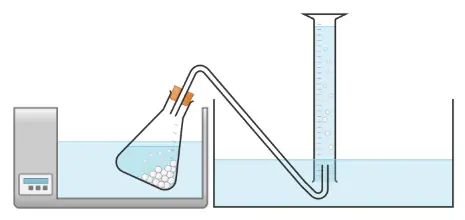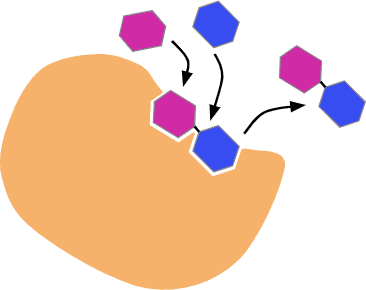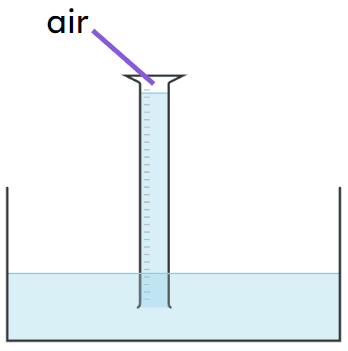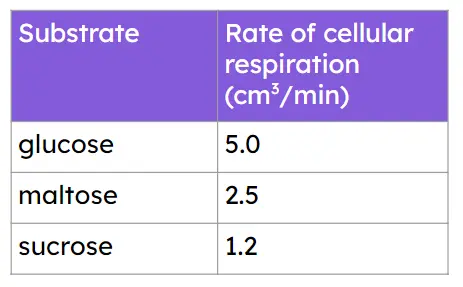

Explaining the effect of different substrates on the rate of cellular respiration
I can analyse data collected from a measuring cylinder, calculate the rate of cellular respiration, and explain the effect of different substrates on the rate.


Explaining the effect of different substrates on the rate of cellular respiration
I can analyse data collected from a measuring cylinder, calculate the rate of cellular respiration, and explain the effect of different substrates on the rate.
These resources will be removed by end of Summer Term 2025.
Lesson details
Key learning points
- Process data to calculate the volume of gas collected in the measuring cylinder, and the mean of repeat measurements.
- Calculate the rate of respiration by dividing the volume of gas collected in the measuring cylinder by the time.
- Use appropriate units for the rate of cellular respiration.
- Compare the rate of respiration in yeast given different substrates, and describe trends in the data.
- Use ideas about enzymes and active sites to explain the effect of different substrates on the rate of respiration.
Keywords
Rate - A measure of how much change occurs per unit of time.
Cellular respiration - An exothermic chemical process that transfers energy for life processes, using glucose as fuel.
Substrate - The substance that fits into an enzyme’s active site.
Enzyme - A biological catalyst.
Active site - The part of an enzyme where the substrate binds.
Common misconception
Thinking that each enzyme can act on many different substrates.
This lesson reinforces understanding that each enzyme has a specific substrate, because only that substrate will fit into they enzyme's active site.
To help you plan your year 11 biology lesson on: Explaining the effect of different substrates on the rate of cellular respiration, download all teaching resources for free and adapt to suit your pupils' needs...
To help you plan your year 11 biology lesson on: Explaining the effect of different substrates on the rate of cellular respiration, download all teaching resources for free and adapt to suit your pupils' needs.
The starter quiz will activate and check your pupils' prior knowledge, with versions available both with and without answers in PDF format.
We use learning cycles to break down learning into key concepts or ideas linked to the learning outcome. Each learning cycle features explanations with checks for understanding and practice tasks with feedback. All of this is found in our slide decks, ready for you to download and edit. The practice tasks are also available as printable worksheets and some lessons have additional materials with extra material you might need for teaching the lesson.
The assessment exit quiz will test your pupils' understanding of the key learning points.
Our video is a tool for planning, showing how other teachers might teach the lesson, offering helpful tips, modelled explanations and inspiration for your own delivery in the classroom. Plus, you can set it as homework or revision for pupils and keep their learning on track by sharing an online pupil version of this lesson.
Explore more key stage 4 biology lessons from the Aerobic and anaerobic cellular respiration unit, dive into the full secondary biology curriculum, or learn more about lesson planning.

Licence
Starter quiz
6 Questions


Aerobic respiration -
glucose + oxygen --> water + carbon dioxide
Anaerobic respiration (animals) -
glucose --> lactic acid
Anaerobic respiration (plants) -
glucose --> carbon dioxide + ethanol

Exit quiz
6 Questions
Active site -
the part of an enzyme’s structure where the substrate binds
Enzyme -
biological catalyst
Lock and key -
a model used to explain why each enzyme can only catalyse one reaction
Substrate -
a substance that binds to the active site of an enzyme
Rate -
a measure of change over time





